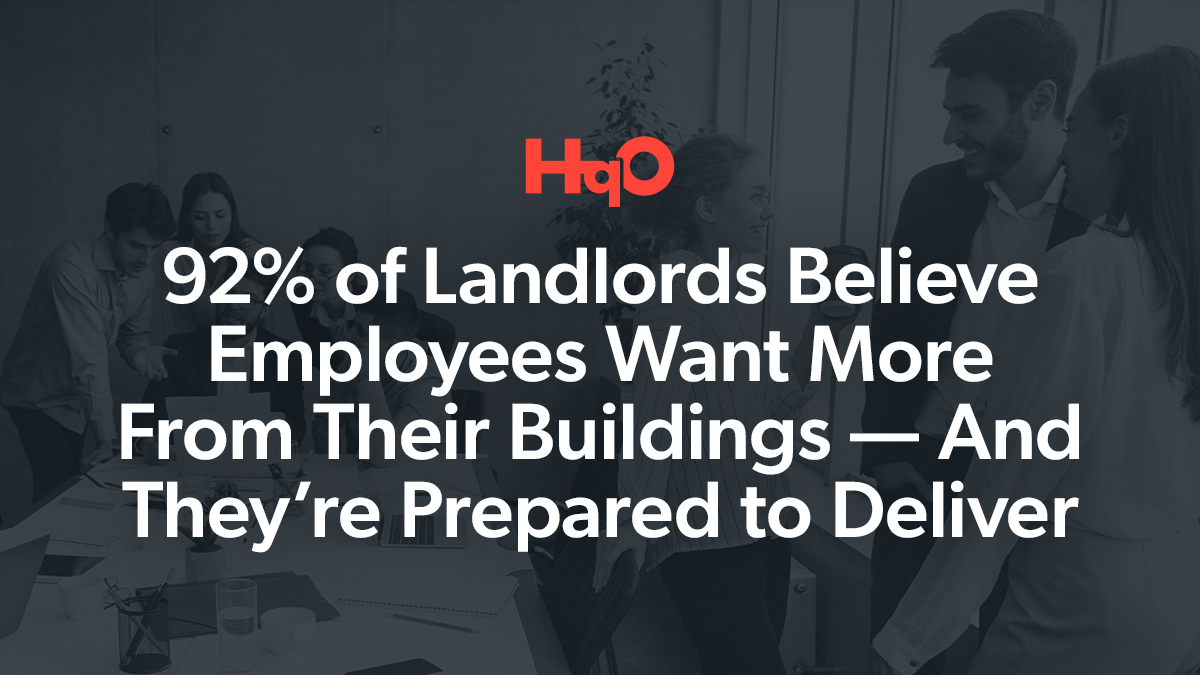Landlords investing in tenant experience teams and tech-based communication tools
Fresh off the heels of HqO’s survey of corporate employers, we’re pleased to release key findings from our commissioned survey of select international landlords, all of which have at least 1M square feet of commercial real estate property.
The top-line takeaways? Overall, today’s landlords are optimistic. Only 20% think demand will decline over the long-term. But, they also agree that employees want more from their buildings (92%).
Where Landlords and Tenants Meet
In our 2022 Tenant Engagement Report from earlier this year, we heard that most businesses were adopting hybrid work models, reducing their overall commercial real estate (CRE) footprint. Today’s results corroborate those findings. Only 48% of landlords surveyed say at least 75% of their office space is currently leased. Moreover, only 24% of landlords say they experience greater than 75% daily utilization of their leased spaces.
In contrast, if one were to look at the market at large, it shows the demand for marquee or specialty space remains high. Leaders such as Salesforce, Apple, and Google are investing heavily in space, even as they have reduced the amount of time or eliminated the requirement for employees to physically come to the office altogether. Perhaps, as a result, surveyed landlords are working to increase the flexibility, usability, and appeal of their spaces through targeted strategies.
Those surveyed are taking proactive steps to align with — and attract — tenants and address any shortfalls.
Investments, Support, and Communication Advancements are Priority
To succeed, landlords know they must form deeper and less transactional relationships with their tenants and drive collaboration across their strategies and business initiatives, while improving maintenance processes and pricing, as well as offering better in-office experiences.
All surveyed landlords are involved in their tenants’ long-term real estate plans through close collaboration, ongoing joint meetings, or ad hoc communications. However, weekly, monthly, or short-term communications are limited. Landlords plan to address these communication gaps via technology sooner rather than later. Overall, investments in tenant experience technologies are set to increase or remain the same, with an isolated few suggesting a reduction.
To manage more frequent and meaningful communications, landlords are also investing in enhanced experience teams to meet the varying needs of their tenants:
- Nearly 90% of landlords are planning to provide dedicated tenant experience staff, or already do.
- 40% of landlords see these tenant experience leaders as primary decision-makers, with a further 40% regarding them as influencers. In context, this gives experience teams more responsibility than asset or portfolio managers.
These tenant experience leaders are helping to deliver on stated areas of interest from tenants, such as reservation tools for desks and parking, food and beverage ordering services, visitor management and access control, maintenance tools, and energy monitoring technologies. In fact, a full 80% of landlords believe that tenants are keenly interested in comprehensive building mobile applications. As such, experience teams are rolling out digital amenities to complement the physical amenities that tenants have become accustomed to to help reduce even more workplace friction.
By investing in people, technology, and time, landlords are poised to meet their tenants where they are, and cement these relationships for the long haul.



